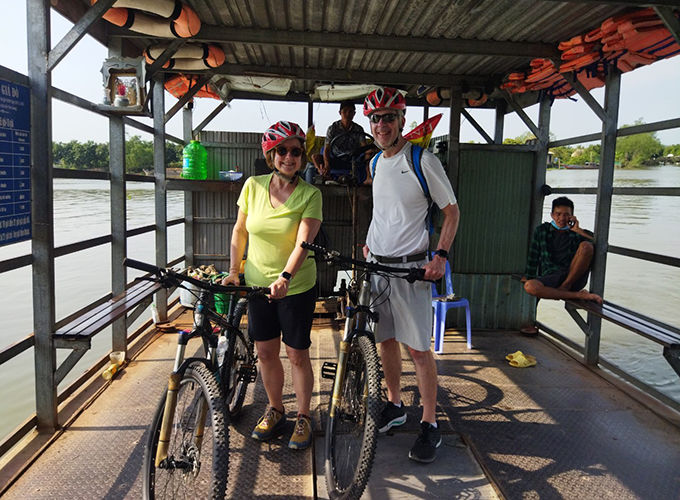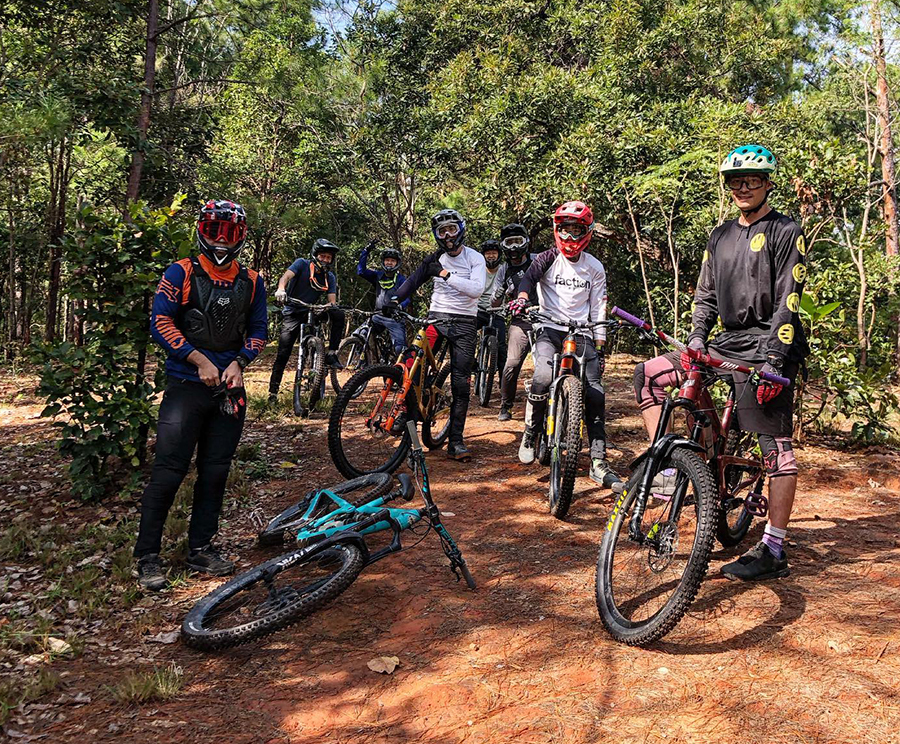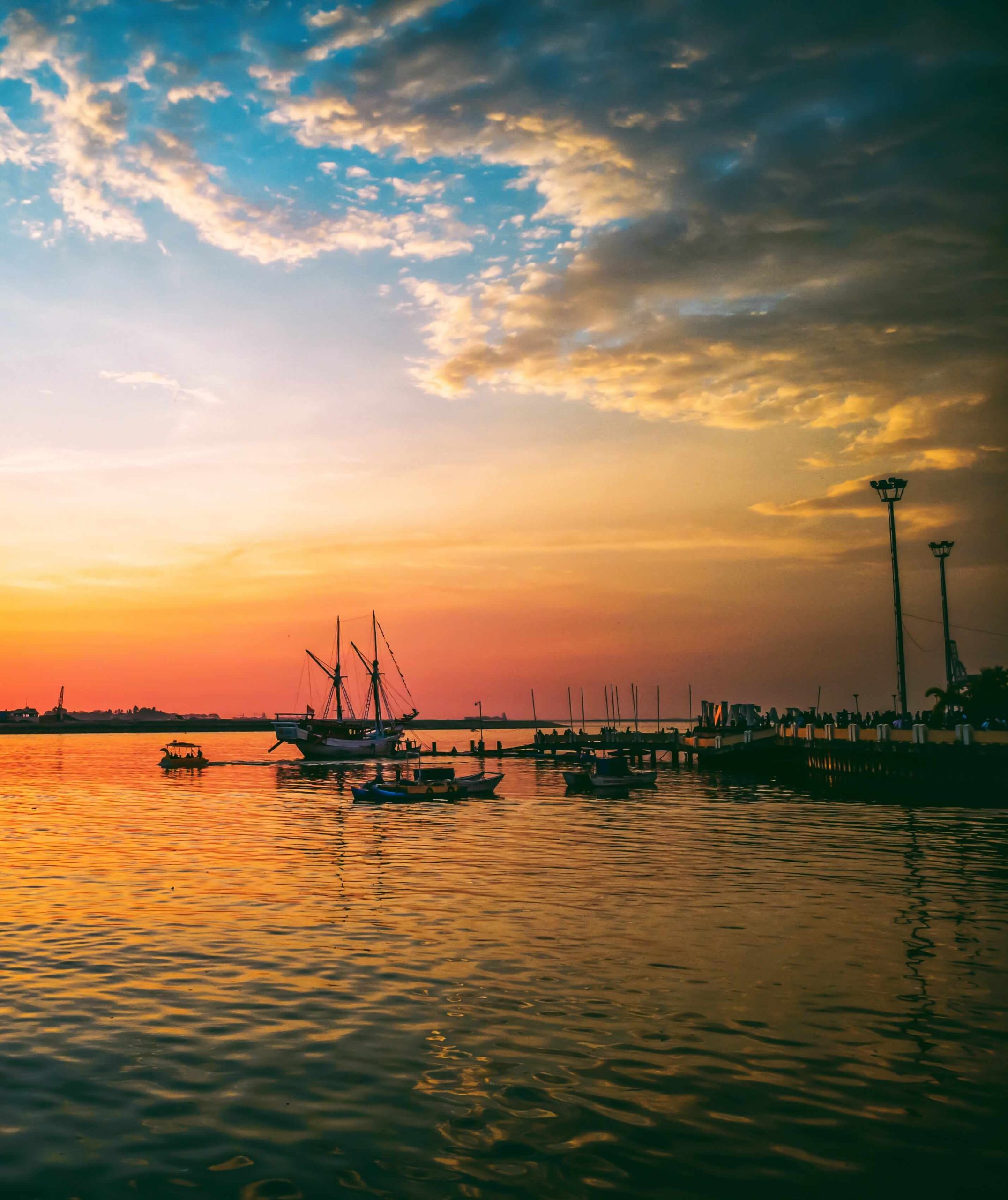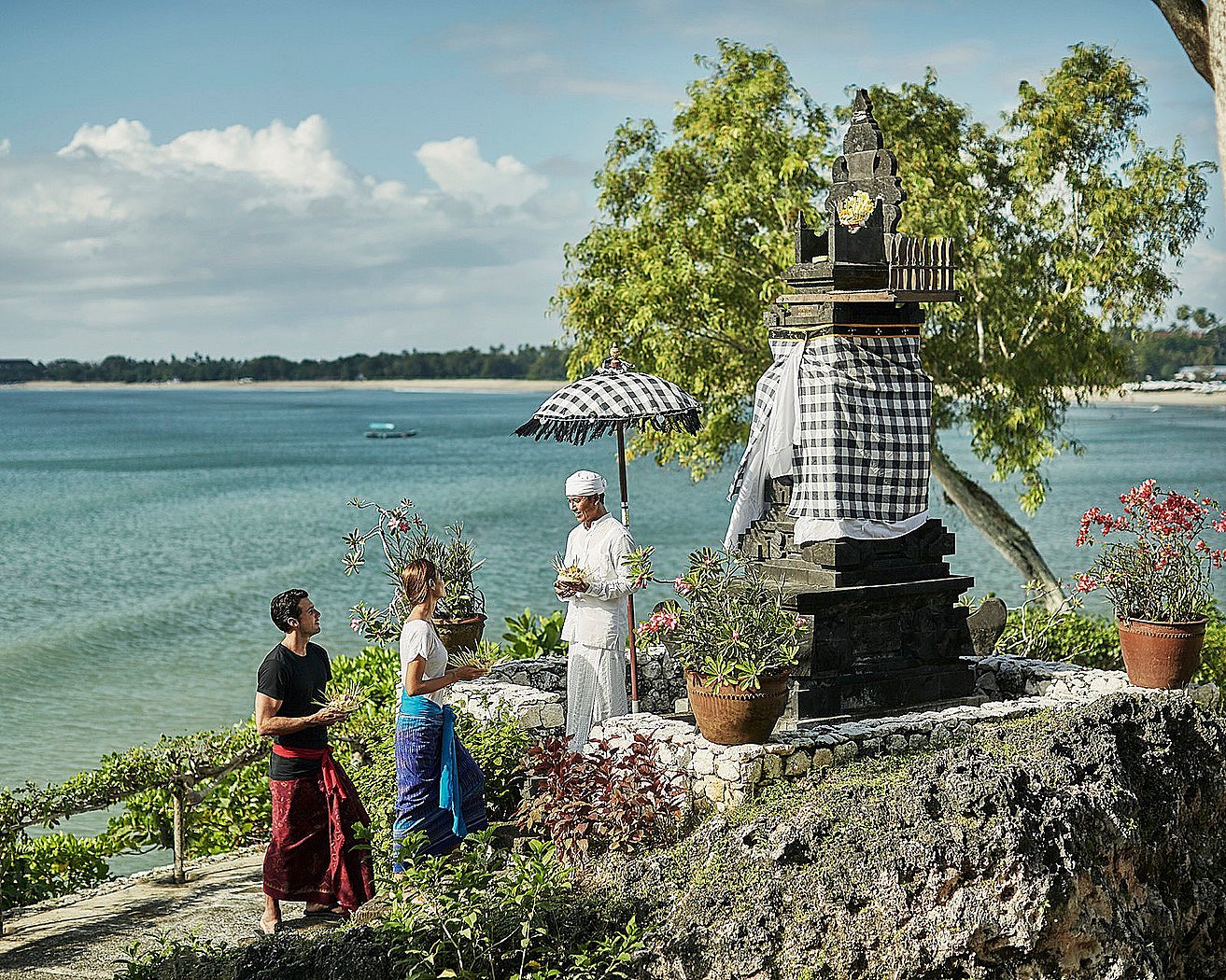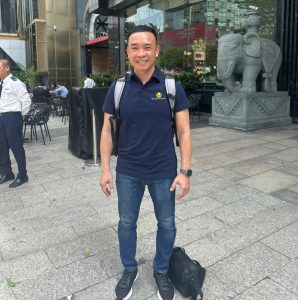Top UNESCO Sites to Visit in Southeast Asia
- 15 Cambodia Vacations
- |
- 14 Travel guides
- |
- 17 Places to visit
- |
- 0 Hotels
- |
- 1 Things to do
- |
- 0 Mekong Cruises
- |
- 12 Best time to visit
- |
Top UNESCO Sites to Visit in Southeast Asia
UNESCO calls its World Heritage Sites “irreplaceable sources of life and inspiration,” and after spending time in Southeast Asia, I understand exactly why. I’ve stood in 900-year-old temple ruins, wandered through misty forests filled with wildlife, and explored old towns like Hoi An, where history is still part of everyday life.
Across the region, many of the Top UNESCO Sites to Visit in Southeast Asia are close enough to explore in a single trip – but I’ve found it’s more meaningful to slow down and focus on the ones that really speak to you. Whether you’re drawn to ancient architecture, lush nature, or living culture, there’s something here that stays with you long after you’ve left.
In this guide, I’ve grouped together the sites that have stood out most to me and the travelers I’ve worked with, organized by country. You can dive deep into just one destination or connect a few together – either way, it’s a journey worth taking.
Vietnam’s UNESCO World Heritage Sites
Vietnam’s UNESCO-listed sites show just how diverse the country is – from dramatic natural landscapes to ancient royal cities and spiritual ruins tucked deep in the jungle. If you’re starting in the north and working your way down the coast, there’s a natural rhythm to the route that lets you experience some of the country’s most meaningful places along the way.
Hoi An Ancient Town
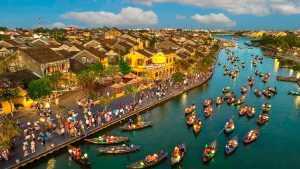
Hoi An, Vietnam
Hoi An is one of Vietnam’s most charming and well-preserved towns – a former trading port where centuries of cultural influence still shape the streets today. From the 15th to the 19th century, merchants from China, Japan, and Europe left their mark on the town’s architecture and layout, creating a beautiful blend of styles set along quiet canals.
A Hoi An Old Town Walking Tour is the best way to take it all in. With most of the old town closed to cars, it’s ideal for exploring on foot. You can wander between colorful Chinese assembly halls, cross the iconic Japanese Bridge, and admire wooden shopfronts that seem frozen in time. It’s a place that feels both historic and alive.
After your walk, visit one of Hoi An’s many tailor shops – they’ll measure you up and create a custom-made outfit in just a day or two. While you wait, enjoy a bowl of cao lau at the night market, lit by the glow of silk lanterns overhead.
My Son Sanctuary and UNESCO
Tucked in a quiet jungle valley, My Son Sanctuary was once the spiritual heart of the Champa Kingdom, which thrived between the 4th and 13th centuries. Its red-brick temples, built without mortar, were dedicated to Hindu gods and decorated with carvings that hint at the stories and rituals of a lost civilization. Early morning is the best time to visit – the light is soft, the air is cooler, and the site feels especially peaceful.
Many of the towers were damaged during the Vietnam War, so you won’t find the grand scale of places like Angkor. But My Son has a quiet, weathered beauty – and standing among the ruins, surrounded by forest, it’s easy to feel the significance of what once was. It’s a thoughtful stop that adds context and contrast to temple visits further along your journey.
Complex of Hue Monuments
Hue was once the imperial capital of Vietnam, and its 19th-century walled citadel still carries the quiet power of its royal past. Inside the Imperial City, you’ll find crumbling palaces, lotus ponds, and temple roofs decorated with colorful mosaics – all surrounded by a wide moat. Some of the structures still bear scars from the Vietnam War, but restoration efforts continue to bring the city’s history back to life.
One highlight just outside the city is Emperor Minh Mang’s tomb, set within perfectly landscaped gardens shaped like the emperor’s resting form – a peaceful and symbolic place to explore.
To round out your visit, don’t miss Hue’s distinctive cuisine. Originally created for the imperial court, the food here is elegant, balanced, and rich with flavor. For something special, I recommend a private meal with a local chef like Nhu Huy, who brings traditional recipes to life in her own home.
Phong Nha-Ke Bang National Park
Phong Nha-Ke Bang is a place where nature still feels wild and undiscovered. Hidden among jungle-covered mountains and quiet rice paddies are some of the world’s largest and oldest caves – vast underground spaces filled with towering rock formations, rivers, and 300-million-year-old fossils. Scientists are still uncovering new species here, and exploring the caves with a guide feels like stepping into another world.
For the adventurous, multi-day treks take you deep into the park’s cave systems, where you can camp on soft sand beside an underground river and swim in clear pools lit by shafts of light from above. It’s one of the most surreal experiences Vietnam has to offer.
Back on the surface, the park is just as rewarding. You can cycle, hike, or paddle through the lush landscape – and if you visit in May or June, keep an eye out for bright blue butterflies drifting through the forest. The park is open from March to late August, before the rainy season makes it too dangerous to explore.
Halong bay

Halong bay, Vietnam
Halong Bay is one of those places that looks like it belongs in a painting – over 1,500 limestone towers rising from still, green waters. A cruise here takes you past floating fishing villages, into caves hidden in the cliffs, and through quiet corners of the bay where the only sound is the dip of your paddle. Most boats offer sunrise Tai Chi on deck, and kayaking gives you a more personal way to explore.
It’s a popular spot – and it shows. But if you want the same breathtaking views without the crowds, nearby Bai Tu Long Bay is a quieter alternative. You’ll still cruise between towering karsts, but with more space and a slower pace. Evenings here are peaceful, and you can spend time with local fishing families or simply enjoy the calm.
Cambodia’s UNESCO World Heritage Sites
Cambodia is best known for its ancient temples, and there’s no better base for exploring them than the lively town of Siem Reap. With its boutique hotels, night markets, and growing food scene, it’s a great place to relax before diving into the jungle-wrapped ruins nearby. I often suggest pairing a temple visit with a slow journey along the Mekong River from Vietnam – it’s a beautiful way to see daily life unfold along the water and ease into Cambodia’s rhythm at a gentler pace.
Angkor Archaeological Park
If there’s one UNESCO site in Southeast Asia that truly lives up to the hype, it’s Angkor. Spread across the forests near Siem Reap, this massive complex is a showcase of Khmer artistry and spiritual devotion. From the detailed carvings of battle scenes to the elegant leaf patterns on stone columns, every structure tells a story – and none more so than Angkor Wat, the largest religious monument in the world.
The best way to take it all in? I recommend exploring by bicycle with a local guide who knows the quiet corners and best routes. You can cycle along ancient walls, slip into Ta Prohm before the crowds arrive, and feel the cool air inside echo-filled chambers once used for chanting. It’s a place that’s not just seen – it’s felt.
Preah Vihear Temple
Tucked high in the Dangrek Mountains near the Thai border, Preah Vihear feels like one of Cambodia’s most dramatic and remote temple sites. It sits atop a 500-meter cliff with sweeping views over the plains below – a location so striking it was long contested between Cambodia and Thailand, until the International Court of Justice confirmed its place on Cambodia’s side.
Unlike most Khmer temples, Preah Vihear is laid out along a north-south axis, leading visitors up a long, stepped approach that passes through a series of intricately carved entrance towers. At the top, the main sanctuary stands quietly overlooking the countryside, surrounded by a powerful sense of stillness and sky.
For a truly unforgettable perspective, you can also take a helicopter flight over the temple and nearby Angkor sites – an incredible way to appreciate both the isolation and grandeur of this sacred place.
Laos’s UNESCO World Heritage Sites
Laos might not draw the same crowds as its neighbors, but that’s part of what makes it so special. It’s a country of quiet beauty and deep spirituality, where golden temples sit beneath jungle canopies and ancient mysteries still linger in the landscape. From Vientiane, it’s easy to reach Luang Prabang and Pakse by short flight – both gateways to some of the country’s most remarkable UNESCO sites. And if you’re up for something more remote, one site in particular offers a journey well off the beaten path.
Wat Phou
Set on a forested hillside overlooking the Mekong, Wat Phou may not be as grand as Angkor, but it holds a quiet beauty that’s just as moving. These ancient Khmer ruins – believed to predate Angkor Wat – were once a major spiritual site. Today, they remain one of the oldest temple complexes in Southeast Asia.
Walking up the stone path through crumbling sanctuaries and frangipani trees, you’ll reach the upper terraces with sweeping views over rice fields and river plains. It’s a steep but rewarding climb, ending at a sacred spring where locals still come to pray. If you’re traveling in southern Laos, consider pairing a visit here with a relaxed cruise down a quieter stretch of the Mekong.
Luang Prabang
Luang Prabang is where Laos really shows its soul. Tucked between mountains and rivers, this former royal capital blends traditional Lao culture with traces of French colonial charm. The streets are lined with stilted wooden houses and golden-roofed temples, and there’s a peaceful rhythm to daily life here.
Wake early to witness the alms-giving ceremony, where locals offer food to passing monks in saffron robes – it’s a gentle, humbling moment that reflects the deep spirituality of the town. Later, you can sip coffee by the Mekong, explore the markets, or cycle through quiet side streets. Luang Prabang is less about sightseeing and more about soaking in the atmosphere.
Plain of Jars
Scattered across the windswept Xieng Khouang Plateau, the Plain of Jars is one of Southeast Asia’s most intriguing mysteries. Hundreds of massive stone jars lie across the landscape, some taller than a person, with little known for sure about who carved them or why.
Theories range from burial grounds to ancient fermentation vats – even legends of giants using them to brew rice wine. Whatever the truth, there’s something haunting and unforgettable about seeing them in person. Reaching the site takes effort, either by road or a short flight, and parts of the plateau remain off-limits due to unexploded war ordnance. But for travelers who make the journey, it’s a rare chance to experience a truly enigmatic piece of history.
Thailand’s UNESCO World Heritage Sites
Thailand’s UNESCO sites offer a fascinating mix of history and nature – from the ancient capitals of Siam to dense forests teeming with wildlife. If you’re craving downtime after exploring, it’s easy to pair these cultural gems with a beach escape in the south. Or, if you’re up for more adventure, Bangkok is well-connected to neighboring countries, making it a great starting point for a wider Southeast Asia journey.
Historic City of Ayutthaya
Once one of the world’s largest cities, Ayutthaya was the proud capital of the Siamese Kingdom until it was largely destroyed in the late 1700s. Today, its towering stone prangs, temple ruins, and quiet monasteries still reflect the city’s former power and spiritual significance. Wat Yai Chai Mongkhon, with its grand spire and reclining Buddha, is one of the most photogenic spots.
Many temples are still active, and locals regularly drape saffron robes over the statues or leave lotus flowers at the altars. The site is large, so one of the best ways to explore is by hopping into a local tuk-tuk – especially the quirky “Kermit” models with their frog-like front ends – and letting your guide show you the highlights.
Sukhothai Historical Park
Sukhothai, Thailand’s first capital, offers a quieter, more reflective look at the country’s roots. It dates back to the 13th century and is considered the birthplace of Thai art, language, and religion. The park is filled with serene Buddha statues, lotus-filled ponds, and elegant stupas shaped like blooming flowers.
Exploring by bicycle is one of the best ways to see it all – the paths are flat, scenic, and wonderfully peaceful. After touring the ruins, you might stop by a local eatery for a bowl of Sukhothai noodles – a sweet and savory dish said to originate right here.
Khao Yai National Park
Just a few hours from Bangkok, Khao Yai is Thailand’s oldest national park and one of its best spots for wildlife. UNESCO recognized the park for its role in protecting endangered species like Asian elephants, gibbons, and hornbills – and with a bit of luck, you can spot some of them in the wild.
The park’s trails take you through a mix of evergreen forest, open grasslands, and thick jungle. Waterfalls and hidden pools are scattered throughout, offering a refreshing break along the way. For something special, go on a night safari during the dry season (December to February) – that’s when elephants are most often seen grazing near salt licks or even crossing the road right in front of you.
Start planning your trip to Thailand
Consider your unique journey. These itineraries offer inspiration for experiences our specialists recommend, tailored to your preferences for a personalized trip.
FURTHER READING
PLAN YOUR TRIP
Tell us about your plans and one of our specialists will plan a unique trip for you…
Can’t get any ideas for you next trip? Let TripAdvisor help you!
Find something else special


